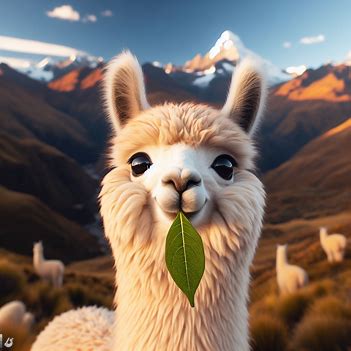Economic Indexes
Updated from World Bank data
- Population: approx. 12.2 million (estimate)
- Annual demographic growth 1.2% (France : 0.3%; USA : 0.4%)
- Life expectancy: 64 years (France : 82 years; USA : 76 years)
- Gross Domestic Product (GDP): $3523 per inhabitant (France : $40,963; USA : $76,398)
- Unemployment: 4,4% (France : 7.4%; USA : 3.6%)
- Population living below the poverty line: 34.6% (2018)
- Minimum monthly salary: 2122 bs (around $300)
 Human Development Index (HDI): the country is ranked 118th in the world (of 191 countries) in 2021
after Chile (42nd), Argentina (47th), Peru (84th), Brazil (87th), Paraguay (105th).
Human Development Index (HDI): the country is ranked 118th in the world (of 191 countries) in 2021
after Chile (42nd), Argentina (47th), Peru (84th), Brazil (87th), Paraguay (105th).
The Human Development Index measures the development level of a country based on three parameters:
education, life expectancy and gross domestic product (GDP). If you want to know the world rank of your country, consult the
UNDP 2021-2022 report)
(United Nations Development Programme).
Natural and Industrial Resources
The country does not have any maritime access, the road network is poorly developed, raw materials are abundant but there are few modern industries to transform these resources into cash for the country.
| Economic resources | Mine, oil, gas, electricity (thermal and hydroelectric power plants), hand craft, textile, tourism |
| Agriculture resources | Soya, coffee, coca, cotton, corn, quinoa, sugar cane, rice, potato, wood, tobacco |
| Mineral resources | Lithium, tin (5th largest producer in the world), silver (9th largest producer in the world), zinc, antimony, copper, gold and gems |
| Breeding | Sheep, cattle, llamas, chickens |

- Oil and Gas
Oil and natural gas represent a significant source of income for Bolivia (approximately 30% of the public revenue of. the country). The current production levels largely satisfy the energy needs of the country, and a large part is exported to the bordering countries (oil and gas account for 25% of all Bolivian exports). Gas and oil reservoirs are located in the lowlands of East Bolivia (around Santa Cruz and Yacuiba). They are conveyed by oil pipelines to the Pacific harbor of Arica in Chile, and by gas pipelines to Argentina and Brazil. The oil production reached its maximum in the 1970s before declining strongly and no new reserves have been discovered recently to boost production levels.
- Mines
Mines are mostly distributed across the Bolivian altiplano. The silver mines of Potosi and Oruro contributed to the growth and wealth of Spain from the XVIth to XVIIIth centuries. Then tin mines took over in the XIXth century. Bolivia was the leading world tin producer at the beginning of XXth century, responding to the urgent demand for this metal from the armed forces around the world during the two world wars. Tin ore is currently Bolivia's principal exported product.
- Lithium
 Bolivia holds the world's largest reserves of lithium (25%), buried mainly in the subsoil of the Salar of Uyuni. This metal is a strategic
resource used in the production of batteries (for cell phones, vehicles, etc.), and is the envy of industrialized countries. The Chinese
and Russian companies signed contracts in 2023 to install mining infrastructures, while the Bolivian government manages the production. The
massive lithium extraction projects envisaged represent a threat to the ecology and a risk to the preservation of the natural treasure that
is the Salar of Uyuni.
Bolivia holds the world's largest reserves of lithium (25%), buried mainly in the subsoil of the Salar of Uyuni. This metal is a strategic
resource used in the production of batteries (for cell phones, vehicles, etc.), and is the envy of industrialized countries. The Chinese
and Russian companies signed contracts in 2023 to install mining infrastructures, while the Bolivian government manages the production. The
massive lithium extraction projects envisaged represent a threat to the ecology and a risk to the preservation of the natural treasure that
is the Salar of Uyuni. - Agriculture
Agriculture entirely satisfies the internal needs of the country. Approximately 40% of the population directly lives from agriculture, despite the fact that cultivated areas represent less than 5% of the total area of the country. These fertile areas are distributed mainly in the valleys of the Eastern Cordillera, the lowlands of eastern and southern Bolivia and in the North of the altiplano.
 Third producer of coca in the world
(after Colombia and Peru)! Should coca culture be prohibited in Bolivia? The coca leaf has been part of the everyday life of Bolivian people
for centuries. Coca leaf is the constant companion of miners and peasants, helping them to forget their suffering and hunger; it is the miracle
drug that alleviates dental and intestinal pains and serves as a natural tea that cures migraines and soroche (altitude sickness). But coca is
also the plant from which cocaine is prepared, posing a serious problem... It is necessary to distinguish between the legal coca (produced for
daily human consumption) and the illegal coca (intended for the preparation of hard drugs).
Third producer of coca in the world
(after Colombia and Peru)! Should coca culture be prohibited in Bolivia? The coca leaf has been part of the everyday life of Bolivian people
for centuries. Coca leaf is the constant companion of miners and peasants, helping them to forget their suffering and hunger; it is the miracle
drug that alleviates dental and intestinal pains and serves as a natural tea that cures migraines and soroche (altitude sickness). But coca is
also the plant from which cocaine is prepared, posing a serious problem... It is necessary to distinguish between the legal coca (produced for
daily human consumption) and the illegal coca (intended for the preparation of hard drugs). - Breeding
Llamas and alpacas (both live in the altiplano region), together with sheep are bred for wool and meat production. Cattle are bred to produce meat and leather.